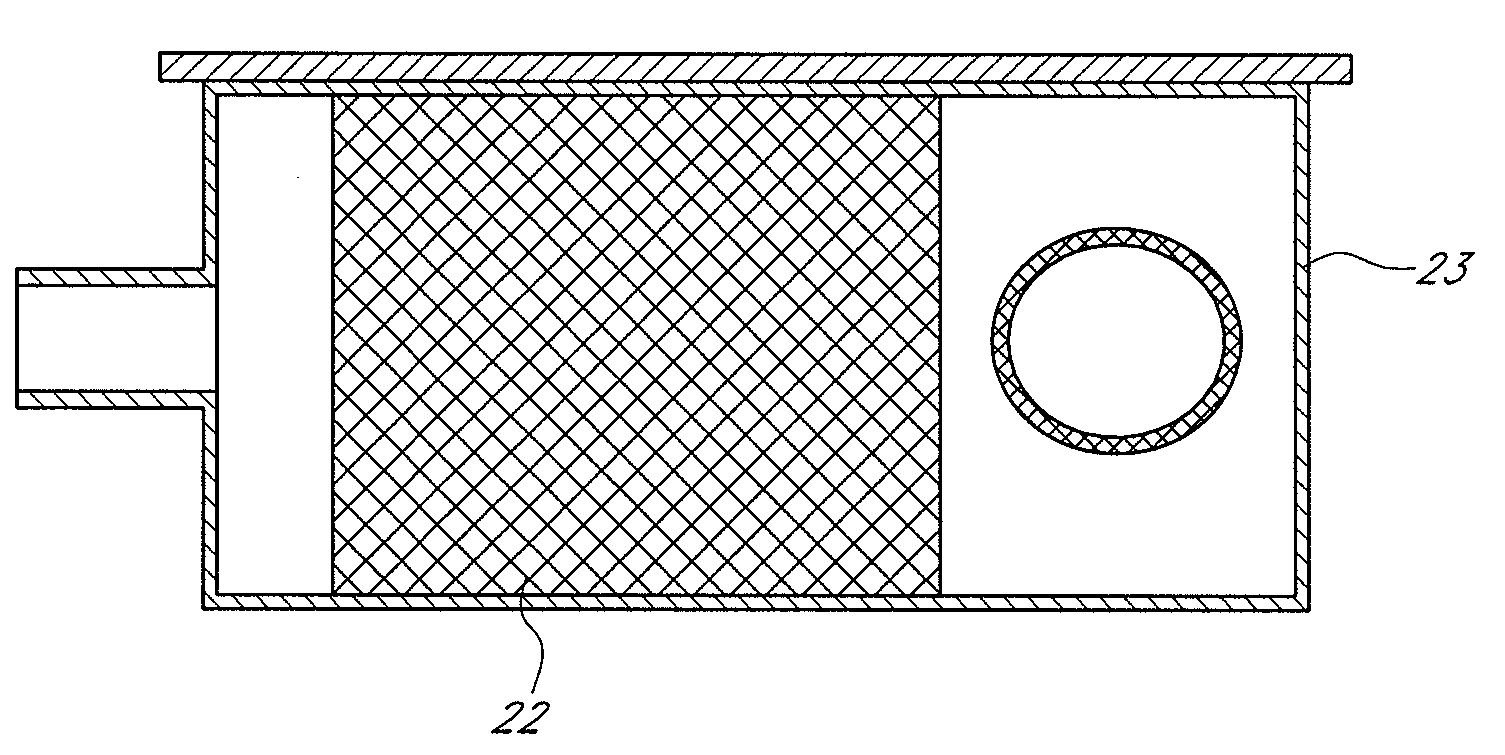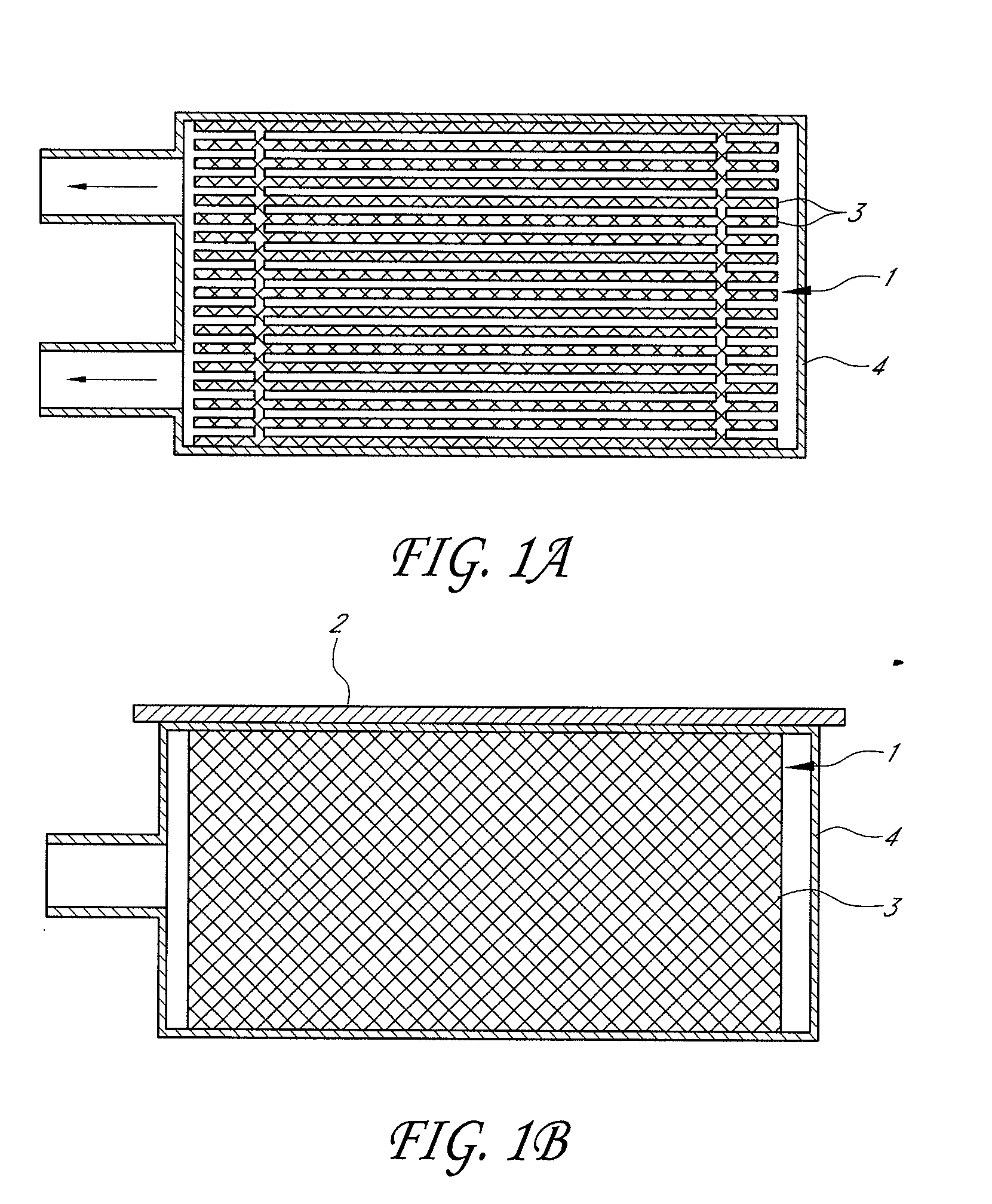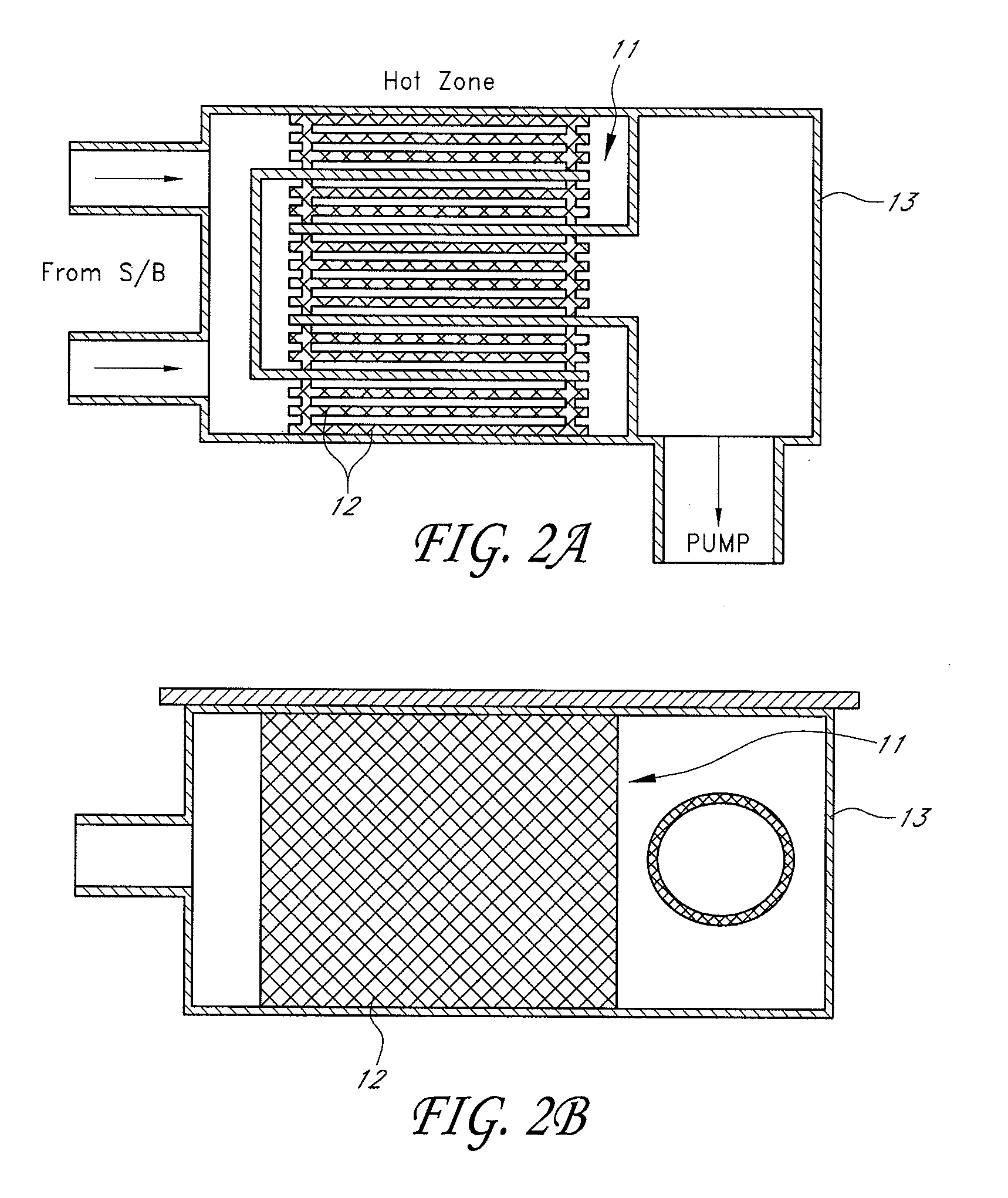Method and apparatus for removing substances from gases
a technology of gas removal and substances, applied in the direction of chemical vapor deposition coating, inorganic chemistry, halogen/halogen-acids, etc., can solve the problems of waste, waste giving rise to tedious cleaning, and rapid wear of the pump, so as to achieve simple and reliable technology
- Summary
- Abstract
- Description
- Claims
- Application Information
AI Technical Summary
Benefits of technology
Problems solved by technology
Method used
Image
Examples
Embodiment Construction
[0022]Generally, the present invention is based on the idea of placing—between the substrates of an ALD reactor and the pump—a material with a high surface area, which forms a postreaction substrate for the discharged superfluous gas phase reactants leaving the actual reaction zone. It is preferred that the surface of the porous material is so large that all of the superfluous material can adsorb upon surfaces of the reactant trap and then be converted into the corresponding final compound when the next reactant pulse enters, according to the principle of ALD (Atomic Layer Deposition).
[0023]The postreaction reactant trap can be placed inside the vacuum vessel, within the hot reaction zone, or it can be formed as a separate chamber between the process chamber (or primary reaction zone) and the pump; even the space of the suction box can be used as a holder for the trapping receptacles.
[0024]The following example relates to growing an aluminum oxide layer with the ALD technique. In a ...
PUM
| Property | Measurement | Unit |
|---|---|---|
| temperature | aaaaa | aaaaa |
| temperature | aaaaa | aaaaa |
| pressure | aaaaa | aaaaa |
Abstract
Description
Claims
Application Information
 Login to View More
Login to View More - R&D
- Intellectual Property
- Life Sciences
- Materials
- Tech Scout
- Unparalleled Data Quality
- Higher Quality Content
- 60% Fewer Hallucinations
Browse by: Latest US Patents, China's latest patents, Technical Efficacy Thesaurus, Application Domain, Technology Topic, Popular Technical Reports.
© 2025 PatSnap. All rights reserved.Legal|Privacy policy|Modern Slavery Act Transparency Statement|Sitemap|About US| Contact US: help@patsnap.com



